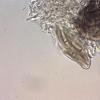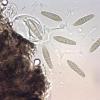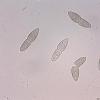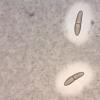
09-01-2026 17:41
Arnold BüschlenHallo, F. dilatata wird von vielen Bryoparasiten

09-01-2026 10:08
 Blasco Rafael
Blasco Rafael
Hola, en el mismo habitat que la anteriorRetamaDia

08-01-2026 21:22
 Blasco Rafael
Blasco Rafael
Hola, He recogido esta muestra de Orbilia sobre Re

07-01-2026 10:24
 Danny Newman
Danny Newman
Pezicula sp. on indet. hardwood Appalachian Highl

07-01-2026 22:22
 Danny Newman
Danny Newman
Tatraea sp. on indet. hardwood The Swag, Great Sm

07-01-2026 17:29
 Marc Detollenaere
Marc Detollenaere
Dear Forum,On a barkless Populus I found some smal

10-11-2021 17:33
 Riet van Oosten
Riet van Oosten
Add-on topic http://www.ascofrance.com/forum/7059

07-01-2026 10:05
 Danny Newman
Danny Newman
cf. Chaetospermum on XylariaCosby Campground, Grea

02-01-2026 17:43
MARICEL PATINOHi there, although I couldn't see the fruitbody, I
I found this bitunicate ascomycete growing on dead leaves of Eriophorum angustifolium.
Pseudothecia are immersed, ca 100-150 µm diam
Asci are bitunicate, ovoid, 8-spored, 38-57 x 22-29 µm (only 2 asci measured). Sometimes immature and post-mature asci are present in the same pseudothecium.
Spores are mostly 22-25 x 5-6(-7) µm, in one sample rather larger (<31 µm long). They are 1-septate, slightly constricted at septum, and sometimes splitting at the septum into 2 parts. Spores are hyaline, becoming dark brown when old, with 2 large oil bodies/cell when fresh, and with a thick gelatinous sheath. The spore wall appears to be minutely verruculose in old spores.
I think it belongs in the Pseudosphaeriaceae. I had wondered about Monascostroma innumerosum but the thick gelatinous spore sheath seems to rule out this species and suggests Wettsteinina. The closest fit in Shoemaker & Babcock's 1987 paper on Wettsteinina is probably W. junci, but the description doesn't fit in all respects, e.g. spore dimensions are given as 26-31 x 9-11 µm (i.e. rather larger than in my specimen). Another possibility is W. waltraudae, described by Scheuer and not included in Shoemaker & Babcock.
I'd be grateful for any suggestions.
Thanks
Marcus





